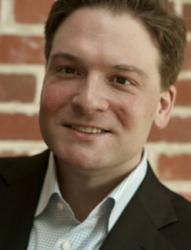Ask Paxton
Nick Dawson is the Director Community Engagement at Bon Secours Virginia Health System. He is also an advisory board member to Medicine X and sits on the Medicine X ePatient advisory panel.
Nick is a passionate advocate of the patient voice. We are excited to have Nick as a guest-contributor to our Medicine X Blog.
London’s regents wanted something grand for the Great Exhibition of 1851. They wanted a building unlike any the world had seen before. Architects and designers from around the country submitted proposals; some reaching for new heights, others for girth. Out of 245 submissions, only two were in scope of the commissions vision [1].
Some time after the formal submission period was over, a young garden designer and greenhouse builder named Joseph Paxton visited London. His design was too late for official consideration, so he had it published in London’s news papers. The public loved it. So much so, in fact, it became of the winning design for the Crystal Palace.
The Crystal Palace, the main hall for the 1851 Great Exhibition, was a massive structure. Nothing like it had ever been built before. According to Bill Bryson, “The finished building was precisely 1,851 feet long… 408 feet across, and almost 110 feet high along its central spine-spacious enough to enclose a much admired avenue of elms that would otherwise have had to be felled. Because of its size, the structure required a lot of inputs-293,655 panes of glass, 33,000 iron trusses, and tens of thousands of feet of wooden flooring…[2]”
Paxton, without any formal training, changed the face of London and, in many ways, global architecture. He gained so much acclaim as an innovative problem solver “ask Paxton” became a comment retort when people asked challenging questions.
What does Joseph Paxton have to do with Medicine X? Everything!
Paxton was a master innovator. He took his knowledge of greenhouse design and scaled it to produce the largest glass structure of its kind. At 2011’s conference at Stanford, IDEO’s Dennis Boyle spoke about innovation thinking. In healthcare, the future will belong to those who can see ideas in one place, and iterate on them to create something new and meaningful.
Joseph Paxton was a passionate self-advocate. Rather than relying on the committee, he showed his design right to the people of London. Does that sound like ePatients to you too? This year, Medicine X will make 35 scholarships available for ePatients to attend the conference. ePatients are engaged, informed, empowered and most of all, connected. Just like Paxton, ePatients know the power of self publishing, sharing expertise and involving others. Having ePatient scholars at Medicine X means the event will be patient-focused, all the way.
The Crystal Palace pushed the bounds of what people thought was possible. Medicine X is all about healthcare transformers – those boundary busters who think beyond what is possible today, and create the future they envision. This year’s Medicine X will feature presenters who don’t settle for the status quo. Instead, they are fueled by a passion to design patient care experiences in a whole new way.
What is your Crystal Palace of healthcare? What system, or process, or technology would you create? Would you take it to the people like Paxton? How would it change the world?
How can we create the future of healthcare? Ask Paxton!
Nick Dawson has more than 13 years experience in hospital operations. He is the Director Community Engagement at Bon Secours Virginia Health System. He is passionate about the patient experience as a driving force in healthcare.
1 http://en.wikipedia.org/wiki/Joseph_Paxton
2 http://www.npr.org/templates/story/story.php?storyId=130569743






